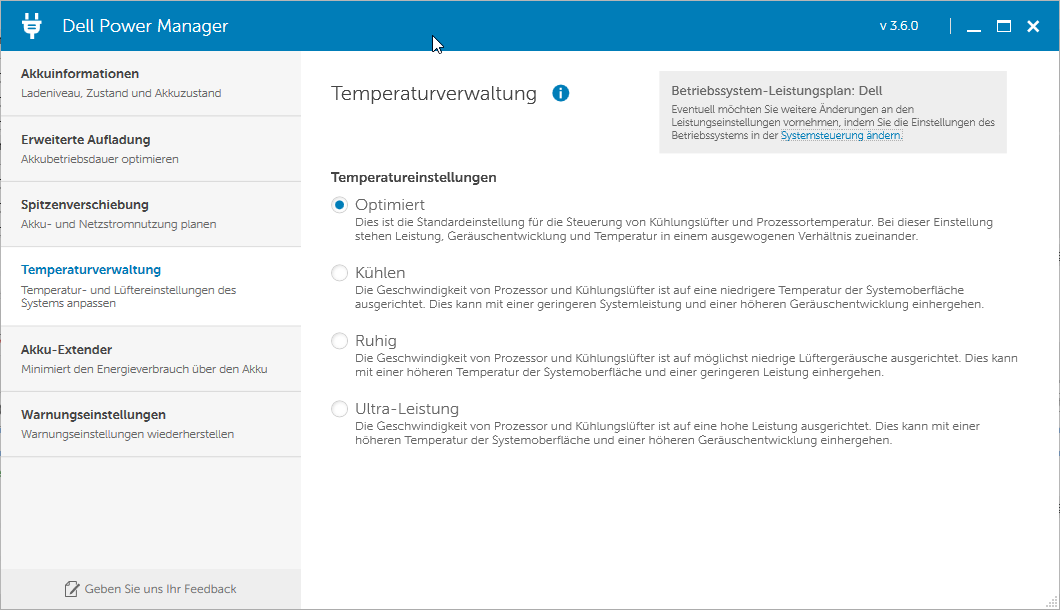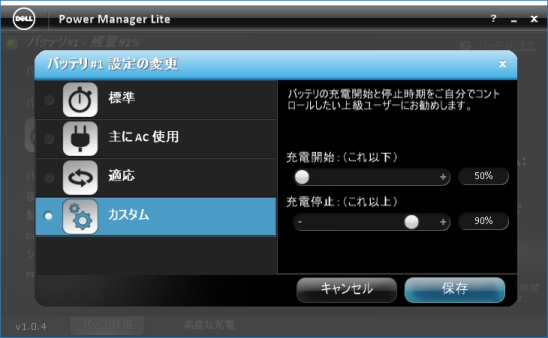
- DELL POWER MANAGER LITE ERROR UPDATE
- DELL POWER MANAGER LITE ERROR DRIVER
- DELL POWER MANAGER LITE ERROR SOFTWARE
- DELL POWER MANAGER LITE ERROR PC
- DELL POWER MANAGER LITE ERROR WINDOWS 7
Check if the same behaviour is observed with a different USB cable or USB portĪs with other kinds of cable, USB cable quality can vary. Some USB 3.0 enabled PCs can exhibit issues on USB 3.0 ports but not on USB 2.0 portsĥ.
DELL POWER MANAGER LITE ERROR PC
Check if the same behaviour is seen when connected to a USB 2.0 port on your PC (or if none is available with a USB 2.0 cable)
DELL POWER MANAGER LITE ERROR UPDATE
Visit your PC manufacturer's website to see if there is a BIOS update available for your computer.Īlso check if USB 3.0 mode (if present) is enabled in your BIOSĤ. Check if you have the latest BIOS version installed on your PC
DELL POWER MANAGER LITE ERROR WINDOWS 7
If you have Windows 7 installed see this article to obtain the latest USB 3.0 host controller driverģ.
DELL POWER MANAGER LITE ERROR DRIVER
Check if you have the latest USB 3.0 host controller driver installed on your PC You can locate the latest version on our Driver DownloadsĢ.
DELL POWER MANAGER LITE ERROR SOFTWARE
Check if you have the latest DisplayLink software installed


Profile is targeted for operating environments where enhanced Although not optimal for allĮnvironments, this is an excellent starting point for performanceĭense Configuration enhances reliability features and reduces power consumption at the cost of considerable performance. Performance profile provides potentially increased performance by maximizing processor frequency and the disabling certain power savingįeatures such as C-states and. However, theĮffectiveness of this profile for reducing overall system powerĬonsumption is based on how well the Operating System is able toĮffectively control hardware resources, so the impacts are mixed Processor frequencies for higher power efficiency. The power management scheme used for this profile isĬalled “OS DBPM”, which allows the Operating System to manipulate Performance-per-watt (OS), otherwise known as “OS Control”, is similar to the DAPC profile for all sub-options except for the CPU Dell Active Power Control (or DAPC), relies on aīIOS-centric power control mechanism which offers excellent powerĮfficiency advantages with minimal performance impact in mostĮnvironments, and is the CPU Power Management choice for this overall Performance-per-watt (DAPC) profile is the default, and represents an excellent mix of performance balanced with power consumption It goes in depth on the different profiles. But I'm quite sure DAPC (Dell Active Power Controller) is similar to what Power saving mode is in the 11th generation servers, but can't confirm. This is documentation for 12th generation servers, while the R710 is 11th generation. The following Dell Whitepaper goes in depth on the differences between the different power profiles:īelow you can find some relevant pieces of information mentioned in the whitepaper:Įach profile simply enables/disables some BIOS features, the table below provides an overview of the features.


 0 kommentar(er)
0 kommentar(er)
